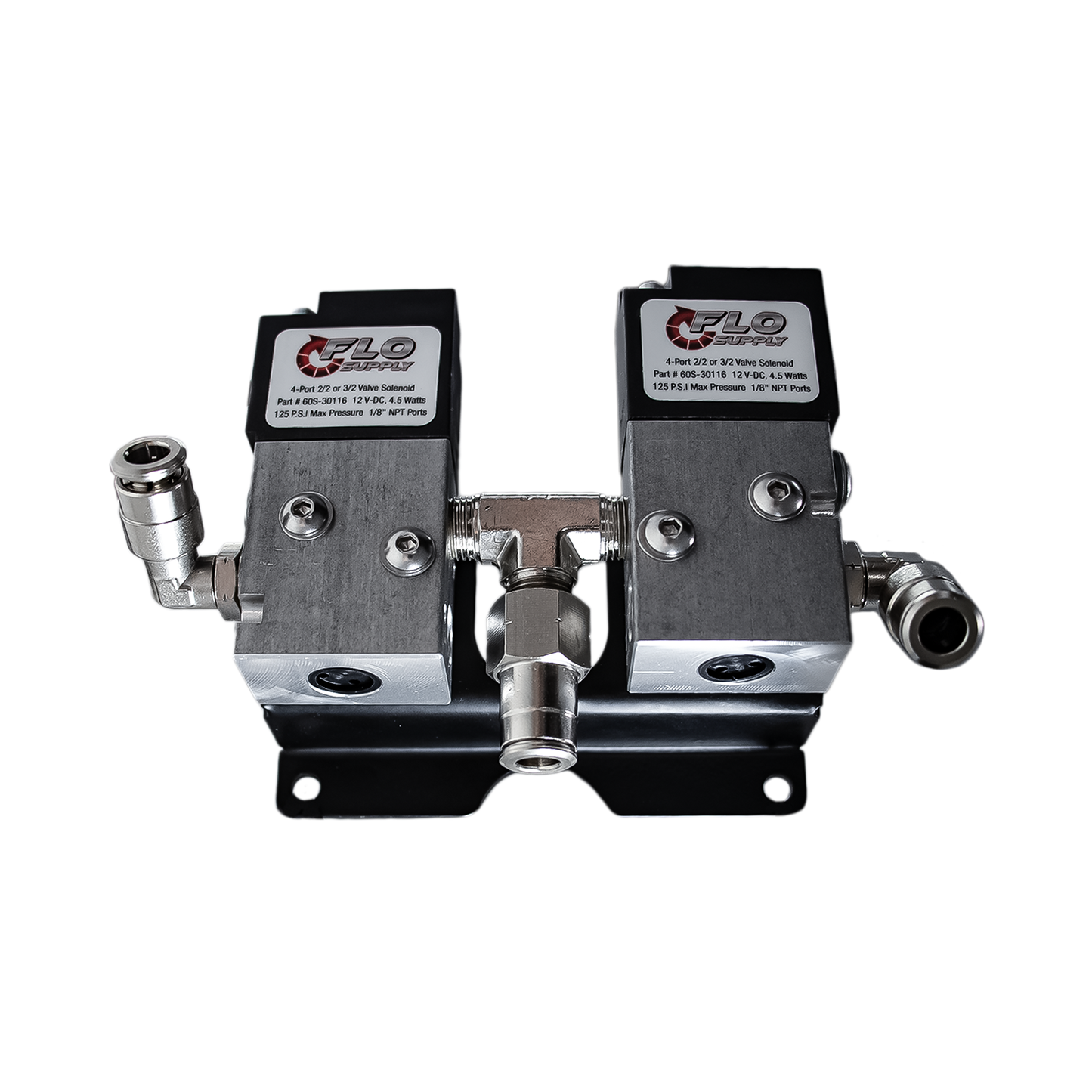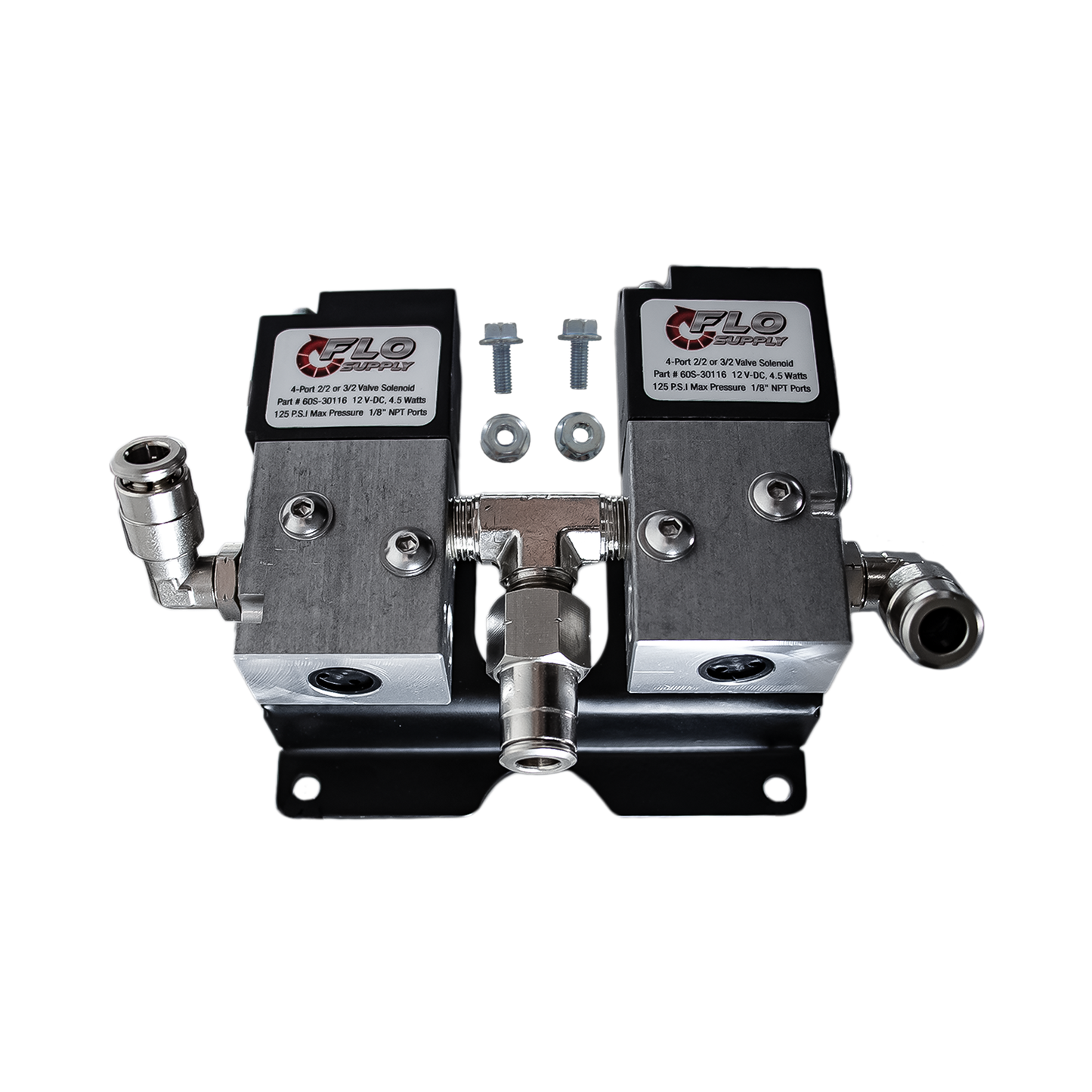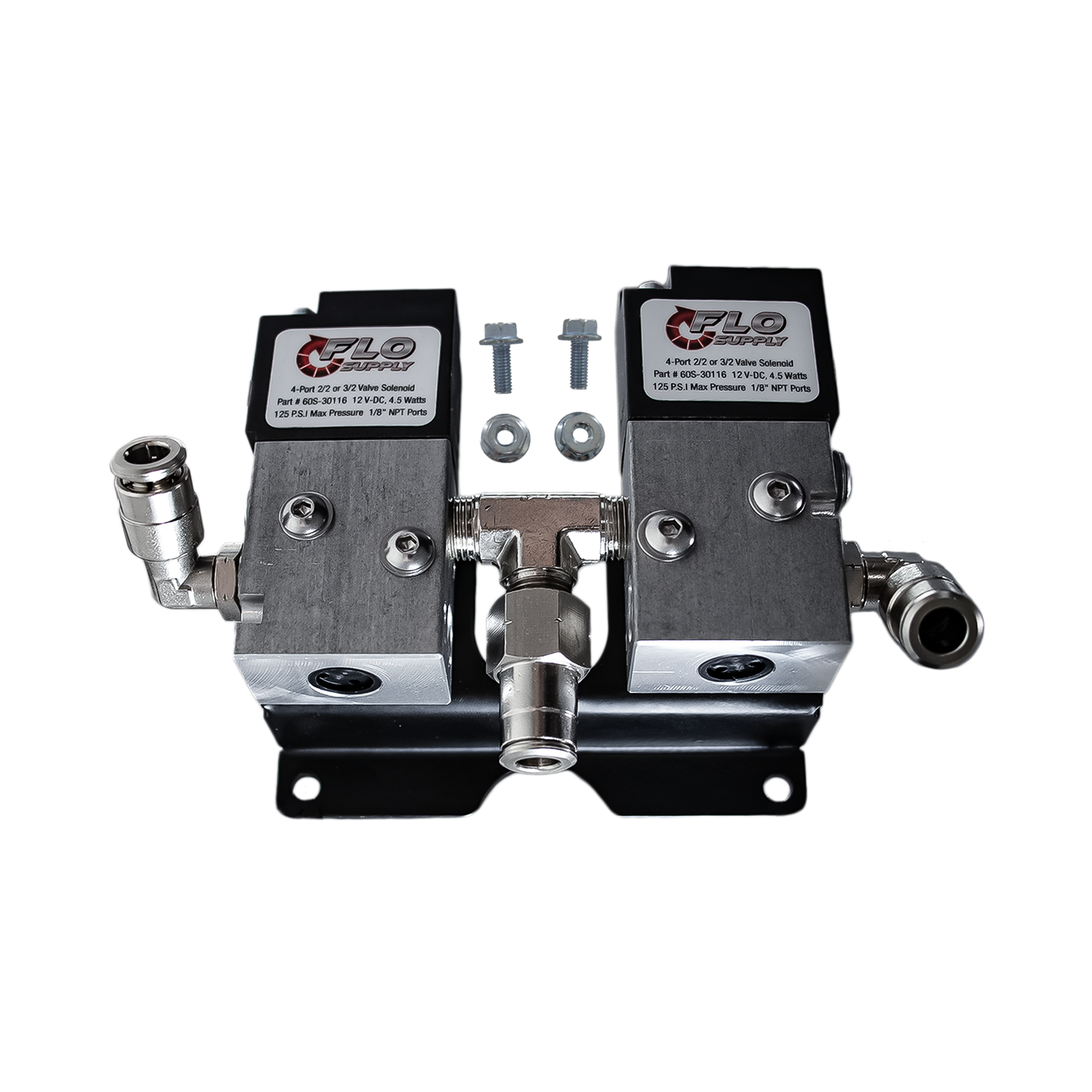Flo Supply
Stepped Solenoid Bracket with Fittings for Dual 4-Port Solenoid Valve
SKU: 60S-30116-DSBA- (2x) Flo Supply 4-Port Solenoid Valve
- (1x) Flo Supply 90 Degree Dual Solenoid Bracket
- (2x) 1/4" Hose to 1/8" NPT Male Swivel Elbow Fittings
- (2x) 1/8" NPT Plug
- (1x) 1/4" Hose to 1/8" NPT Female Straight Fitting
- (1x) 1/8" X 1/8" X 1/8" Tee Fitting - Male/NPT
Description:
Take control of your pneumatic or fluid systems with the complete Flo Supply 4 Port Solenoid Valve Kit. This all-in-one package brings together our high-performance solenoid valve, precision-machined bracket, and the required fittings for seamless system integration—perfect for high-speed automotive applications like shifter and parachute control.
Solenoid Operation:
A 4 Port Solenoid Valve is typically a 2/2 or 3/2 valve designed for controlling the flow of air or fluids in pneumatic or fluid control systems, it works as follows:
-
Port 1 (Pressure or Input Port):
- This port is typically the inlet port where the pressurized fluid (usually air) is supplied to the valve. It’s where the pressure source is connected, often labeled as P (Pressure).
-
Port 2 (Output Port):
- This port is the outlet for the fluid or air to flow through when the valve is activated. This is typically connected to the actuator or downstream equipment where the controlled fluid is needed. It’s usually labeled as A (Output) in a 3/2 configuration.
-
Port 3 (Exhaust Port):
- If it’s a 3/2 valve, port 3 is the exhaust port, where the fluid or air is vented or released when not in use, or when switching between active and inactive states. This is typically labeled as B or Exhaust.
Basic Function:
- In the energized state, the solenoid actuates the valve to allow fluid to flow from Port 1 to Port 2, while Port 3 is either vented or closed, depending on the valve's configuration.
- In the de-energized state, the valve may switch the flow path, directing fluid from Port 1 to Port 3 and venting or exhausting from Port 2. This valve is typically used in applications requiring reliable switching and precise control, such as controlling cylinders, actuators, or systems in industrial automation or automotive systems.
Share


- Choosing a selection results in a full page refresh.


